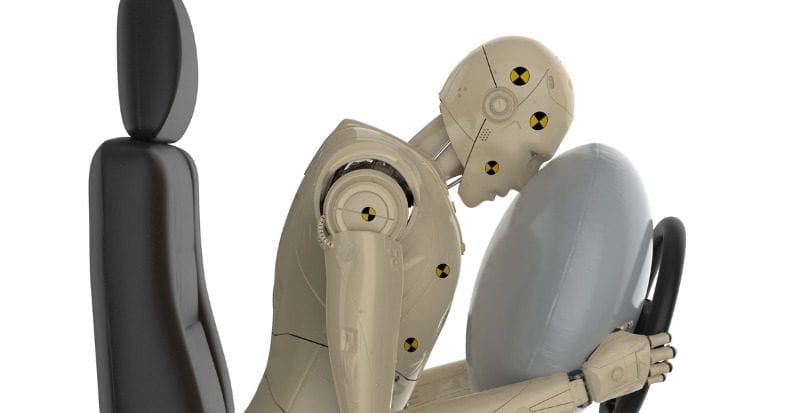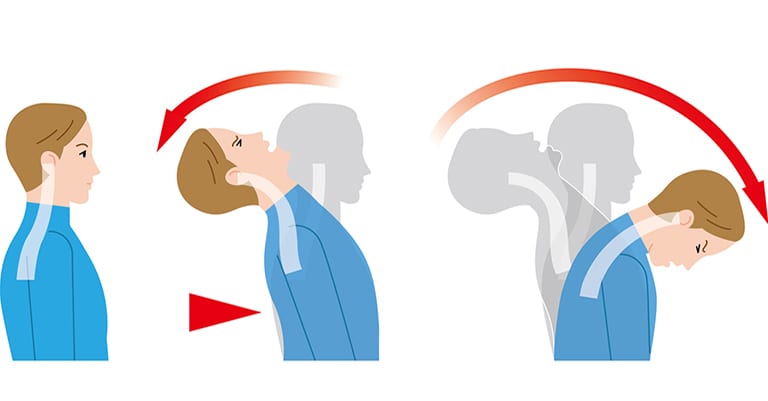Of all the symptoms associated with whiplash associated disorders (WAD), dizziness may be one of the most concerning to patients because of how it can limit their ability to get up and move around. What can be done to treat dizziness following a WAD injury? Two studies published in 2019 suggest that manual therapies and […]
Whiplash Injury, Severity, and Recovery
Experts estimate that whiplash associated disorders (WAD) from motor vehicle collisions (MVCs) affect about 300 for every 100,000 people in the Western each year. Suffice it to say, that’s a lot of people! Crash tests have demonstrated that the risk for whiplash is much greater when the backrest is leaned backward and/or when a headrest […]
The Role of Neck-Specific Exercises for Whiplash Recovery
The cervical spine relies heavily on muscular support, particularly from the deep muscles in the front and back of the neck. Some experts estimate that up to 70% of the stability of the cervical spine arises from these deep neck muscles, particularly those in front of the spine. Studies have demonstrated that the rapid acceleration-deceleration […]
The Link Between Whiplash and Jaw Pain
While neck pain is most commonly associated with whiplash associated disorder (WAD), patients often report jaw or temporomandibular joint (TMJ) pain following a car accident, sport injury, or slip and fall. Common symptoms associated with temporomandibular disorders (TMD) include pain in the jaw joint area (in front of the ear), neck and shoulder pain, ear […]
Whiplash and Tinnitus
While tinnitus is commonly associated with a ringing sound in the ears, it can also involve a buzzing, hissing, or whistling noise. The sound can be intermittent or constant and can change in volume. The noise often intensifies in a quiet room when background noise is absent, such as at night, which can interfere with […]
Reducing the Risk of Car Accident Injury
While doctors of chiropractic enjoy helping their patients get better, the preference is to avoid injury in the first place, and if that’s not possible, to reduce the risk for serious injury. This is especially important when it comes to car accidents, as whiplash associated disorders (WAD) injuries can persist for months to years and […]
Multi-Modal Care for Whiplash Patients
The term whiplash associated disorders (WAD) describes a constellation of symptoms that includes (partial list) pain, stiffness/limited motion, dizziness, headache, depression/anxiety, and brain-fog. The condition is associated with accelerations/deceleration events like car accidents, sports collisions, or slip and falls. Such injuries are classified into four categories: WAD I (no/minimal complaints/injury), WAD II (soft-tissue injury – […]
Whiplash and Mid-Back Pain – How Can This Happen?
Research regarding whiplash or whiplash associated disorders (WAD) classically focuses on neck pain; however, the data show acute thoracic spine / mid-back pain (MBP) occurs in 66% of WAD injures with 23% still complaining of MBP at one-year post-injury. It’s easy to visualize how the cervical spine or neck can be injured in an automobile […]
Is There a Difference Between Whiplash and Non-Whiplash Neck Pain?
When we hear the term “whiplash injury,” we likely think of car crashes, though whiplash can result from other causes, like a fall or sports collision. Though whiplash is associated with a variety of symptoms, neck pain with lower pain thresholds (called central sensitization) is one of the most common. Neck pain can also […]
Neck Posture BEFORE a Car Wreck – Is It Important?
Abnormal postures of the neck—straight and reversed (kyphotic) curves, for example—are commonly encountered after an individual has experienced a motor vehicle collision (MVC). Many studies discuss the mechanism of injury during a rear-impact MVC that result in a straight or kyphotic curve, but few have considered the importance of this abnormal posture being present BEFORE […]
- « Previous Page
- 1
- …
- 6
- 7
- 8
- 9
- 10
- …
- 24
- Next Page »









